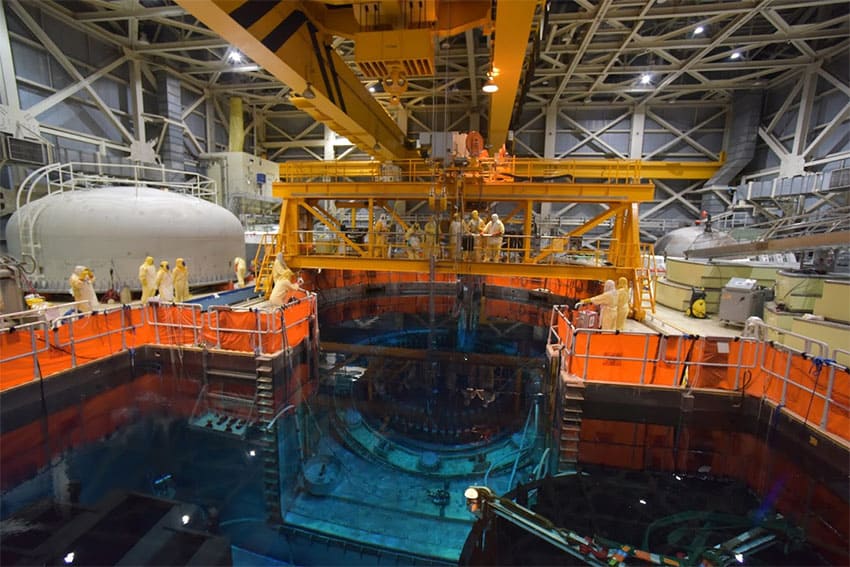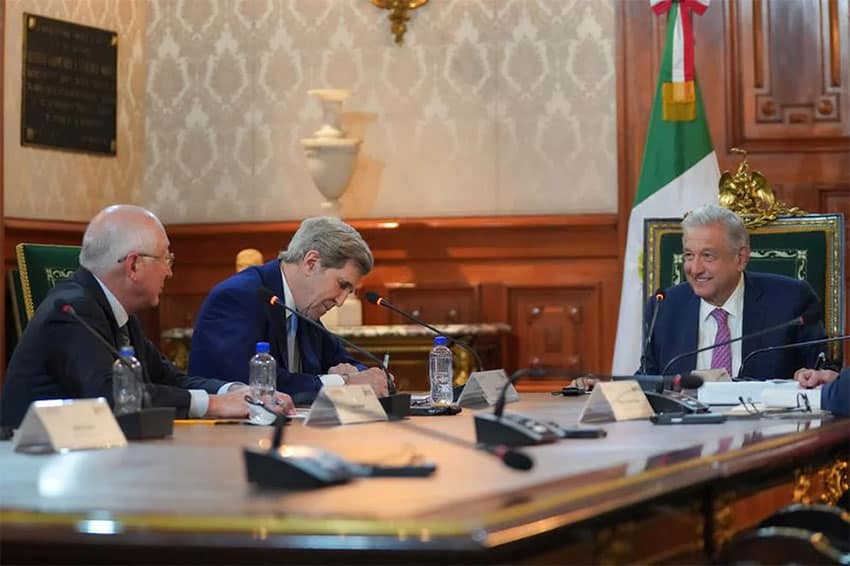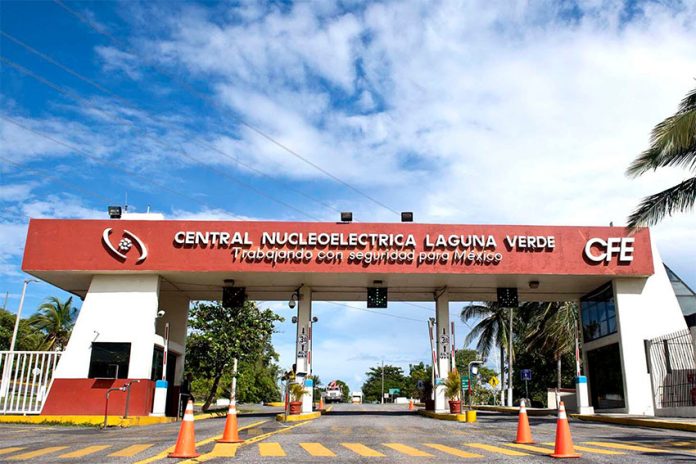A nuclear energy agreement between Mexico and the United States took effect on Wednesday, the U.S. government said.
The Department of State said in a statement that the Agreement for Cooperation in Peaceful Uses of Nuclear Energy — signed by the two countries in 2018 and approved by Mexico’s Senate in March — had entered into force.
“The agreement will enhance our cooperation on energy security and strengthen our diplomatic and economic relationship,” the statement said.
“This is the first bilateral agreement for peaceful nuclear cooperation between the United States and Mexico. The Agreement builds on the nearly 80 years of peaceful nuclear cooperation between our two countries and establishes the conditions for continued U.S. civil nuclear trade with Mexico.”

The State Department said that civil nuclear cooperation agreements “provide a legal framework for exports of nuclear material, equipment, and components from the United States to another country.”
The agreement with Mexico “provides a comprehensive framework for peaceful nuclear cooperation … based on a mutual commitment to nuclear nonproliferation,” the department said.
“It will permit the transfer of nuclear material, equipment (including reactors), components, and information for nuclear research and nuclear power production.”
Mexico’s state-owned Federal Electricity Commission (CFE) operates one nuclear power plant with two reactors — the Laguna Verde plant in the Veracruz municipality of Alto Lucero de Gutiérrez Barrios. A CFE official said in late 2019 that the company believed it was “advisable” to install two more reactors at that plant and two on the Pacific coast, but that hasn’t happened.
The United States has 54 nuclear power plants in 28 states, according to the U.S. Energy Information Administration (EIA).
Energy Minister Rocío Nahle has indicated she is open to the expansion of nuclear power in Mexico, and said in late 2020 that the CFE was considering building a small nuclear plant in Baja California. “Do we want more nuclear energy? Yes, I’m convinced,” she said at the time.
Nahle said on Twitter last year that nuclear energy is “clean, safe, constant and profitable,” adding that the two CFE reactors in Veracruz work “safely and efficiently in accordance with global safety standards, supervised by international organizations.”
Neither the energy minister nor the department she heads has commented on the entry into force of the agreement with the United States.

John Kerry, the United States special presidential envoy for climate, was in Mexico last week and met with President López Obrador to discuss renewable energy. Kerry said Wednesday that López Obrador was set to make a major announcement with regard to Mexico’s climate commitments.
“I was just in Mexico a few days ago and we will have a major announcement, which President López Obrador has agreed to with respect to what Mexico is now going to undertake,” he told a press conference ahead of his trip to Egypt to attend COP27, the 27th annual United Nations meeting on climate.
It was unclear whether Mexico might commit to increasing the generation of energy with nuclear reactors as part of a plan to cut emissions. The agreement with the U.S. could facilitate such an undertaking.
Nuclear reactors “do not produce direct carbon dioxide emissions” while operating, but “the processes for mining and refining uranium ore and making reactor fuel all require large amounts of energy”, according to the EIA.
López Obrador has championed the ongoing use of fossil fuels to generate power, but his government is also modernizing hydroelectric plants.
In a virtual address earlier this year to the Major Economies Forum on Energy and Climate, hosted by U.S. President Joe Biden, the president presented 10 “actions” Mexico is “implementing in the fight against climate change.”
Among the climate change-fighting actions cited by López Obrador were the modernization of 16 hydroelectric plants; Pemex’s investment of US $2 billion to reduce its methane gas emissions by up to 98%; the construction of a 1,000-megawatt solar farm in Puerto Peñasco, Sonora; and the planting of fruit and timber-yielding trees on 1 million hectares of land by means of the Sembrando Vida (Sowing Life) employment/reforestation program.
With reports from Reuters
